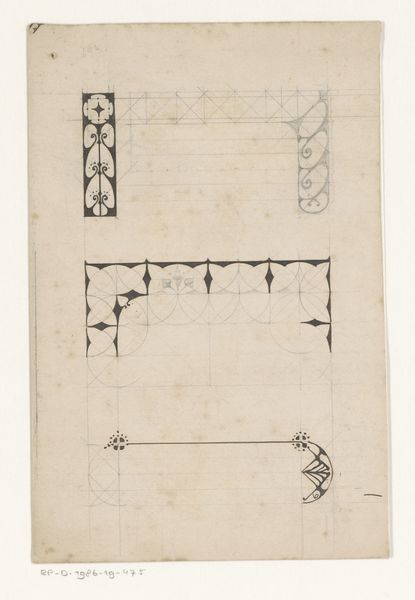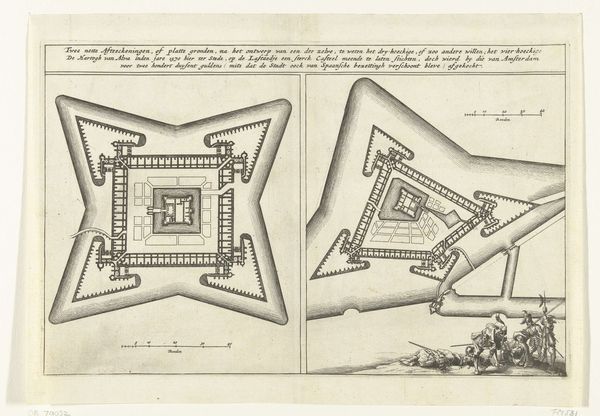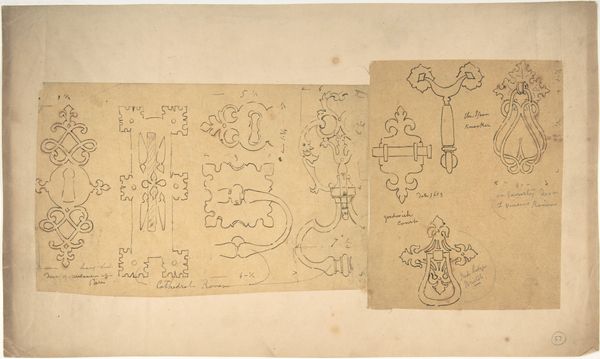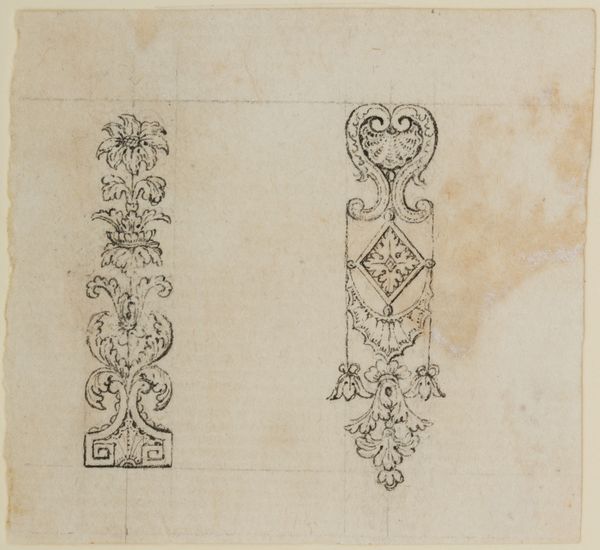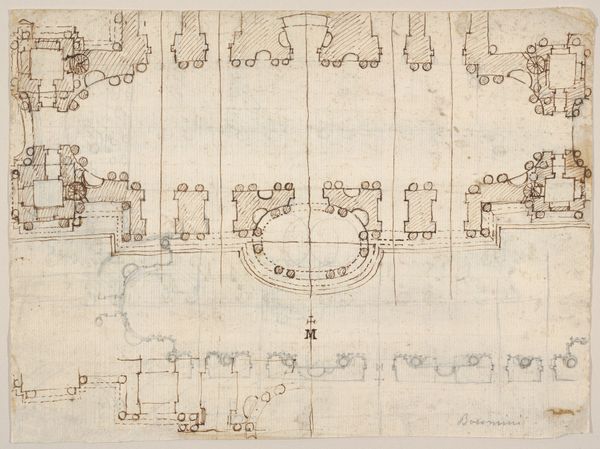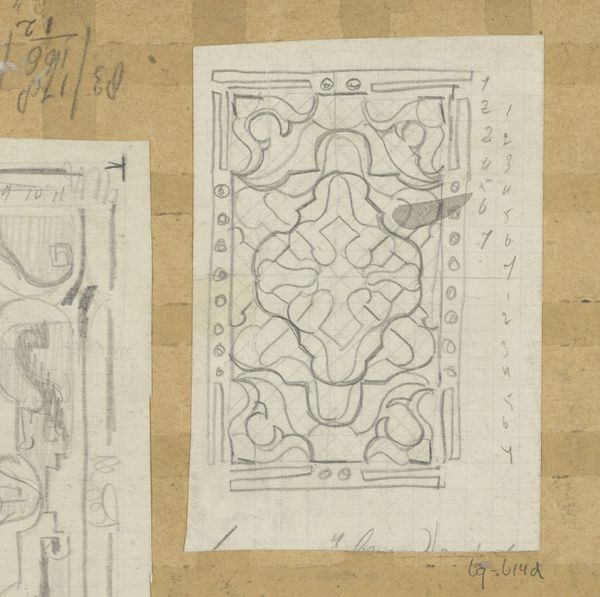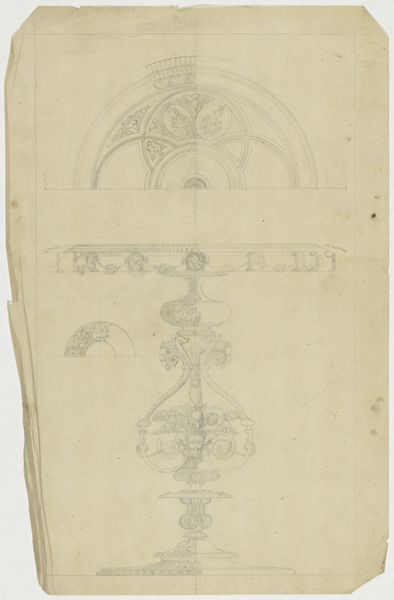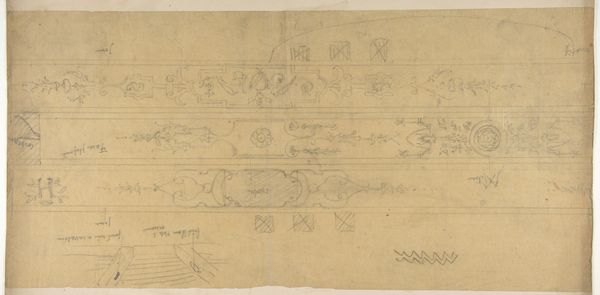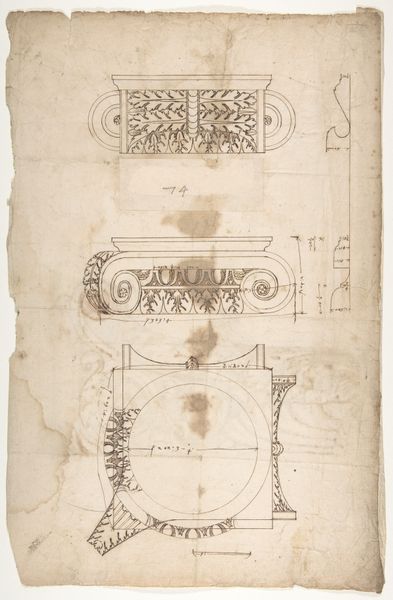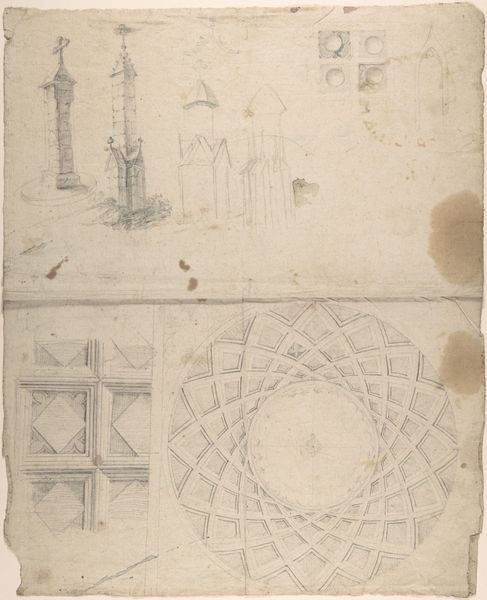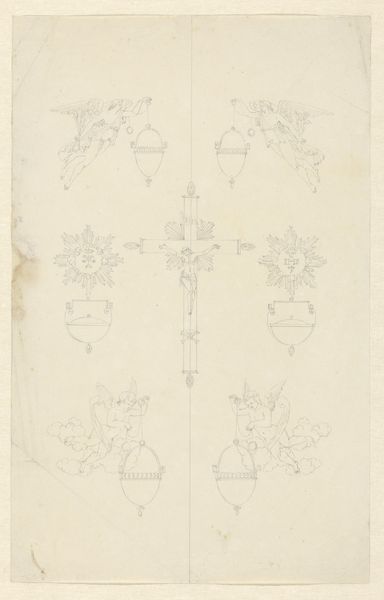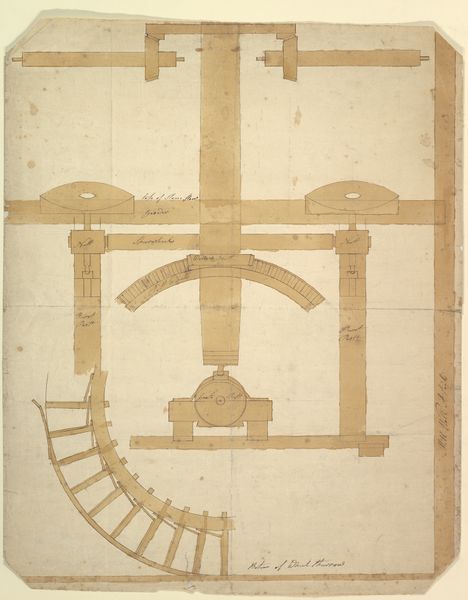
drawing, print, architecture
#
drawing
# print
#
11_renaissance
#
geometric
#
italian-renaissance
#
architecture
Dimensions: sheet: 14 1/2 x 11 1/16 in. (36.9 x 28.1 cm)
Copyright: Public Domain
Curator: I find these two fountain designs on this sheet so utterly charming! I mean, they are just pencil sketches, so they have this vulnerability, a fleeting glimpse into a designer’s mind from centuries ago. The piece is aptly named "Two Plans and Elevations for Fountains," created sometime in the 16th century, now housed here at the Met. Editor: They definitely have a gentle, dreamy quality. It’s interesting how basic the architectural drawings are, very clean and geometrical, but somehow imbued with this potential for…joy. I suppose that’s what fountains are all about: an elegant excuse for playful water. What can you tell me about the role of fountains in public spaces during the Italian Renaissance, considering the context surrounding this particular study? Curator: Fountains were so much more than just decorative back then. They became vital civic symbols, statements of wealth and power for patrons who built them, strategically placed in piazzas and gardens, often at the termination of major roads to both beautify urban settings and, perhaps more practically, provide fresh water to communities. Editor: It’s also fascinating how the sketches embody a spirit of optimism. Each element looks carefully calculated but not static, and I particularly love the fluidity suggested just through pencil strokes. Curator: Exactly! These designs represent this transition from a medieval way of thinking, more about practicality and defense, towards one that prioritizes beauty and civic pride. Imagine walking past these grand fountains, with cool refreshing sprays in the middle of summer. I picture these spaces alive, full of bustle and lively conversation. Editor: Right. One could say they are less about worship than earlier artistic traditions—instead about pure delight, a shift from symbolic displays towards something closer to community engagement with space. The idea is almost utopian. Curator: Well, as drawings, they give a freedom not always seen in execution; these are truly fountain dreams. I see this sheet of sketches as an example of art fulfilling its intended purpose: to stimulate dialogue, contemplation, even playful fantasies such as this! Editor: I completely agree; considering this simple sheet offers a perspective that balances both form and potential and provides some valuable lessons about cultural expression then and even now.
Comments
No comments
Be the first to comment and join the conversation on the ultimate creative platform.
